
ISSN: 2321 9653; IC Value: 45.98; SJ Impact Factor: 7.538
Volume 10 Issue XI Nov 2022 Available at www.ijraset.com


ISSN: 2321 9653; IC Value: 45.98; SJ Impact Factor: 7.538
Volume 10 Issue XI Nov 2022 Available at www.ijraset.com
Tejswini Jirapure1, Dr. Sindhu J. Nair2

1M.Tech. (Environmental Science and Engineering) Scholar, Department of Civil Engineering, Bhilai Institute of Technology, Durg, Chhattisgarh, INDIA

2Professor & M.Tech. Coordinator, Department of Civil Engineering, Bhilai Institute of Technology, Durg, Chhattisgarh, INDIA
Abstract: Every day, we face various environmental issues. The growing population and human activities deplete and degrade the quality and quantity of available water resources. Water is used for a variety of domestic and industrial purposes. Because of the rapid growth of industrialization and urbanization, water has become impure, containing so many insoluble materials and ingredients that it has become wastewater. Nowadays, the world is grappling with major water related issues. Adopting well defined methodologies at an affordable cost by utilizing natural resources is critical for effective water use. This project examines Root Zone Technology by using macrophytes, which is a low-cost and environmentally friendly method of wastewater treatment. To effectively treat domestic and industrial effluents, the root zone treatment and macrophytes treatment system uses a natural method.
The wetlands bed will be divided into number of zones: soil layer, sand layer, coal layer and aggregate layer. Root zone plants (Colocasiaesculenta) planted on the top layer and then treated with floating macrophytes (Pistiastratiotes / Spirodela and Lemna).
When wastewater passes through the top and intermediate layers, all suspended solids become trapped in the pores of soil and sand, and the remaining solids are removed by bacteria. After passing through filter bed water is allow to store in another chamber where water is treated with floating macrophytes which utilizes dissolve and suspended nutrients and helps to reduce concentration of pollution of waste water. The effluent characteristics such as pH, color, odor, BOD, COD, TDS, TSS, Nitrogen, and Phosphate determined. The result shows a reduction in parameters Because of the longer detention periods, the removal rate is increasing.
Due to growing population and all spherical improvement in keeping with capita common annual fresh water availability has been lowering. Wastewater remedy isn't given the important priority it merits and therefore, a tremendous extent of wastewater is not subjected to any treatment and is ultimately discharged into floor water bodies main to the deterioration of water fine. This ends in a multiplied increase within the pollution of surface water bodies. Essential rivers were contaminated through industrialization, urbanization and land use sample (Jindal and Sharma, 2011). Currently, offering housing, health care, social offerings, and access to fundamental human desires infrastructures, which include clean water and the disposal of effluent, gives important challenges to engineers, planners, and politicians (Giles and Brown, 1997). Almost, only 60% of industrial waste water, evaluate article by and large big scale industries is handled. Performance of country owned sewage remedy flora for treating municipal wastewater and common place effluent remedy flora for treating effluent from small scale industries had been also not complying with prescribed standards. For that reason, effluent from the remedy plant no longer appropriate for household cause and reuse of the wastewater is basically confined to agricultural and commercial functions.
A closer study on wastewater makes it understandable to see why we need to deal with it before its released returned into the surroundings. It is a mark of caring for our surroundings and for our own health. Exemple fisheries, wildlife habitats, recreation and quality of life, health concerns.
ISSN: 2321 9653; IC Value: 45.98; SJ Impact Factor: 7.538

Volume 10 Issue XI Nov 2022 Available at www.ijraset.com
The primary aim of wastewater treatment is to take away the suspended solids as feasible before the final water, referred to as effluent, is discharged again to the surroundings. As solid material decays, it use up oxygen, which is needed through the vegetation and animals living in the water
The specific objectives are:
1) To determine the ability of Colocasiaesculenta (C. Esculenta) improving the quality of domestic wastewater by removing the nutrients such as Nitrogen, Phosphate, BOD, COD, Ph, TDS, TSS and stabilising the organic matter.
2) To compare the performance of Reed bed planted with Colocasiaesculenta (C. Esculenta) and floating macrophytes.
3) To study the removal efficiency of sub surface flow (SSF) Reed bed in terms of various water parameter quality.
4) To determine which wastewater treatment method is the most cost effective in comparison to traditional wastewater treatment methods.
1) Domestic sullage outlet treatment is highly recommended.
2) Treatment of polluted streams, open sewer, and bodies of water (Floating beds may be recommended.)
3) Recycling of bathroom water can be used as a polishing treatment for treatments when combined with specific/simple pre treatments.
4) It can be used as a polishing treatment for any wastewater. For example, breweries and sugar factories.
The conventional method
Root zone technology
Required less equipment and fewer materials. Required skilled laborers. No Skilled laborers are required. More land is acquired for construction. Less land is acquired for construction. Overall Construction cost is more. Overall Construction cost is less. No useful for Small cities and towns. Useful for small cities and towns. This method takes more time to treat wastewater. This method takes less time to treat wastewater.
Required more equipment and materials.
Odor problem
No Odor problem
BOD removal efficiency ranges from 70% to 80%. COD removal efficiency ranges from 82% to 92%. COD removal efficiency ranges from 70% to 85%.
BOD removal efficiency ranges from 60 % to 90%.
For 100 % results, 50 to 70 days are required.
1) Effective bacterial and viral removal.
For 100 % results, allow 25 to 30 days.
2) Lower biological oxygen demand and lower levels of suspended solids.
3) Reducing nitrogen concentrations and removing metals.
4) Reducing concentration of heavy metal.

Macrophytes play a primary function in reed beds, influencing biological, chemical and bodily treatment procedures. The maximum vital feature of macrophytes in reed beds has been classified by as physical and metabolic. Physically consequences include filtration of suspended material, safety in opposition to erosion by way of decreasing turbulence and flow velocities stabilization of sediments and supplying the floor area for micro organisms. Metabolic capabilities of macrophytes include nutrient uptake and O2 release from roots into the rhizosphere. Macrophytes have adapted to anaerobic situations by using growing inner air areas which shipping O2 to the root zone. These air areas shape an extensive system in the course of the plant and might occupy 60% of the overall tissue volume. Studies differ on the capacity for macrophytes to release O2 from roots to the surrounding rhizosphere consequently supplying aerobic conditions for plant nitrification to arise.
ISSN: 2321 9653; IC Value: 45.98; SJ Impact Factor: 7.538


Volume 10 Issue XI Nov 2022 Available at www.ijraset.com
A examine by means of concluded that inner O2 movement no longer most effective furnished to buried plant tissues but also leaked O2 into the rhizosphere.
Macrophytes also can provide habitat for plant life and fauna and boom aesthetic appeals. Research differs on the importance of plant uptake in nutrient removal with nutrient loading is a crucial component in the proportion of nutrient elimination by means of plant uptake.
Aquatic flora have the characteristic ability of transporting air (oxygen) from the ecosystem to the roots from in which a component diffuses into the liquid substrate. They’ve noticeably deep roots and rhizomes which create a large volume of energetic rhizosphere consistent with unit floor area.
They supply oxygen to the micro organisms inside the substrate, and help stabilize the organic matter applied. The flowers create oxidized microorganisms perform, stabilizing organic matter and promoting nitrification denitrification additionally. Because the roots and rhizomes penetrate via the soil, they loosen the soil and improve percolation, for this reason supporting in stabilizing the hydraulic conductivity.
1) Researchers had studied the performance of Colocasiaesculenta in wetlands for the removal of heavy metals (Madera Parra et al., 2015; Chayapan et al., 2015), nutrients (Bindu et al., 2008), xenobiotics (Cheng et al., 2002), and for treating domestic wastewaters in aerobic condition (Mbuligwe, 2004) however, the particular macrophyte had not yet been studied for treating domestic waste effluent considering the better overall performance of the said macrophyte in different packages, Colocasiaesculenta changed into chosen as a macrophyte in the pilot scale vertical subsurface waft constructed wetland to treat effluent. therefore, the intention of this challenge became to assess the role and efficiency of Colocasiaesculenta, Pistiastratiotes / Spirodela & lamnain reducing organics solids and nutrients domestic wastewater in pilot scale constructed wetland structures.
2) For starting, first, the root zone system’s very existence creates space for water to pass through.
3) Second, the roots provide an environment for aerobic bacteria to thrive by introducing oxygen into the soil’s body. A range of chemical processes, including the conversion of ammonia to nitrate, need these organisms. (The first stage of nitro compound biological breakdown).
4) The nitrification process occurs, in which the plants absorb a certain number of nutrients from the wastewater.
5) Finally Treated with Floating macrophytes i.e Pistiastratiotes / Spirodela & lamna with detention period of 24 48 hour.
1) Free floating vegetation have most in their photosynthetic elements above the surface of the water and their root underneath it. Free floating plants can be used as raw sewage in addition to primary or secondary treated effluents. Traditional plant species which have been used inside the huge scale application are water hyacinth and duckweed species (Lemna, Spirodela, and Wolffiela). One of the most productive flora in the world is constrained due to the fact hyacinth desires high temperature for its growth. The most important disadvantage of duckweed compared to water hyacinth is their shallow root structure and sensitivity in the direction of wind, but, the foremost gain is their lower sensitivity toward colder climates.
2) Duckweed species (Spirodela, Lemna) are small floating aquatic flora. They are monocotyledons of the botanical family Lemnaceae and belong to better vegetation or macrophytes (Leng et al., 1995). Duckweed species are found international; they are adapted to a wide type of geographic areas and climatic zones. Until now, duckweed has been exploited as a plant for bioremediation, due to its capacity to pay attention and get rid of pollutants from infected regions. In the closing years, however, duckweed species are being considered as an aid for sustainable agriculture for smooth cultivation and environmental adaptability. From the nutritional perspective, it is also are favored for protein, fat, and starch contents in addition to the amino acid and fatty acid distribution, protein content 20% 35%, fats 4% 7%, and starch 4% 10% per dry weight. Furthermore, the amino acid distributions are near to the WHO recommendations however, because of their bioaccumulation potential; the safety hazards for duckweed can also include the presence of heavy metals, phenols, insecticides, dioxins, and pathogens. For this motive, secure use of duckweed protein products for meals or animal feed continues to be looking ahead to the development of suitable techniques to degree the contaminant level (Stomp, 2005). Floating leaved macrophytes consist of plant species that are rooted in the substrate, and their leaf floated at the surface. So far, only some has used this form of vegetation, and the usage of reed beds with floating leaved species for wastewater treatment.
ISSN: 2321 9653; IC Value: 45.98; SJ Impact Factor: 7.538 Volume 10 Issue XI Nov 2022 Available at www.ijraset.com

3) Spirodela usually known as duckweeds, are the smallest, fastest developing and morphologically handiest of flowering vegetation. The plant body is prepared as a thalloid or ‘frond’ missing a stem and in more derived species even roots. Based totally on fossil records, the ordinary plant body structure of this subfamily developed by means of neotenous reduction from an Araceae ancestor and it has been interpreted botanically as juvenile or embryonic tissue. The reduction and simplification of the plant body progresses inside the lemnoideae from ancient species toward more derived species like wolffia. Even though reduced plant life are observed in duckweeds, they usually reproduce through vegetative daughter fronds initiated from the mom frond. Doubling time of the quickest growing duckweeds below most appropriate boom conditions is < 30 h, almost twice as fast as different ‘fast growing’ flowering plant life and greater than doubles that of conventional plants. They’re smooth to develop and feature negligible lignin and excessive power content material in the form of without problems fermentable starch (40 70% of biomass).
Lemna is a genus of free floating aquatic plants noted via the common name “duckweeds.” They may be morphologically divergent members of the arum own family Araceae. These rapidly developing flowers have found use as a model system for studies in network ecology, primary plant biology, ecotoxicology, and manufacturing of biopharmaceuticals, and as a supply of animal feeds for agriculture and aquaculture. Lemna species develop as simple free floating plant on or just beneath the water floor. Most are small, not exceeding five mm in length, which is elongated and has a branched structure. Lemna thalli have a single root, which distinguishes this genus from the related genera wolffia (lacks roots), spirodela and landoltia (have a couple of roots). The flora develops mainly by using vegetative reproduction, daughter plants bud off from the parent plant. This form of growth permits very speedy colonisation in new waters. Duckweeds are flowering plants, and almost they all are acknowledged to breed sexually, flowering and generating seed below suitable conditions. When Lemna invades a waterway, it can be removed mechanically, with the aid of the addition of herbivorous fish (e.g. grass carp), or, in advisedly, treated with herbicide. The rapid growth of duckweeds reveals utility in bioremediation of polluted waters, in municipal wastewater treatment and as test organisms for environmental studies. It’s also getting used as an expression system for cost effective production of complicated biopharmaceuticals. Duckweed meal (dried duckweed) is a good cattle feed. It includes 25 45% protein (depending on the increase conditions), 4.4% fats, and 8 10% fibre, measured through dry weight.
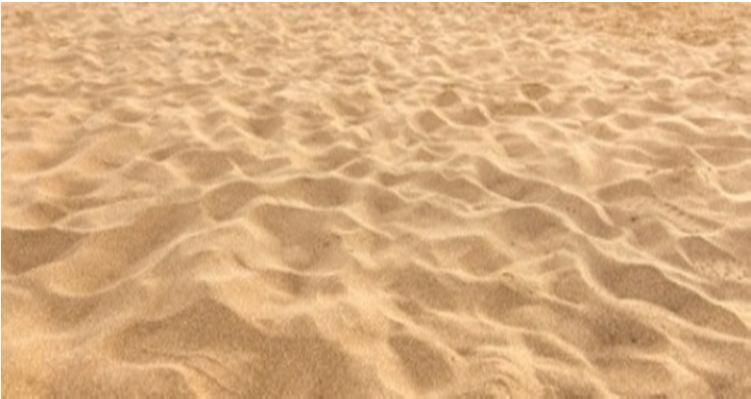

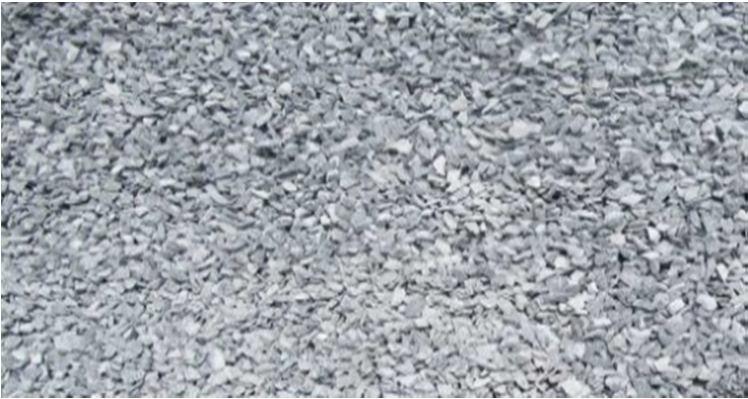

Feed water ,Plastic container, Plastic PVC pipe, Taps, Buckets, Plastic Bottles, Coarse aggregate (40 mm, 20 mm, 10 mm) , river sand ,soil , moringa plant charcoal , clean charcoal, Colocasia esculenta ,Lemna , Spirodela, Duckweed, Collect a sample of wastewater in a plastic bottle for treatment from domestic house outlet. etc. Fig. 1:

ISSN: 2321 9653; IC Value: 45.98; SJ Impact Factor: 7.538



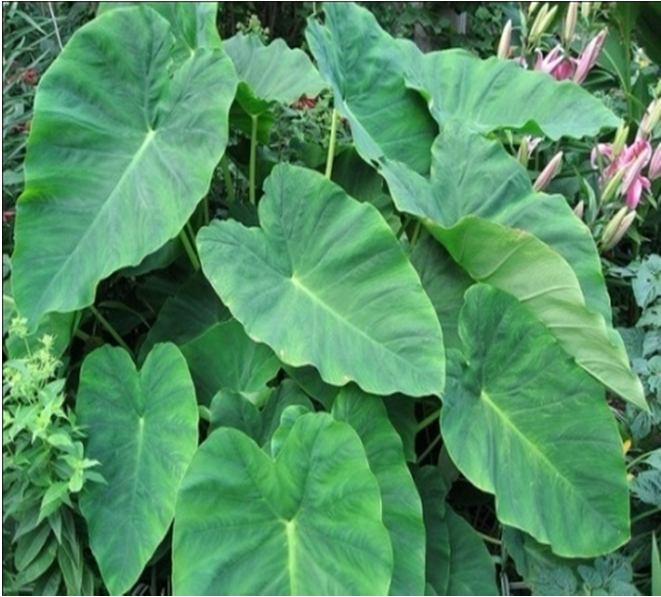
Volume 10 Issue XI Nov 2022 Available at www.ijraset.com
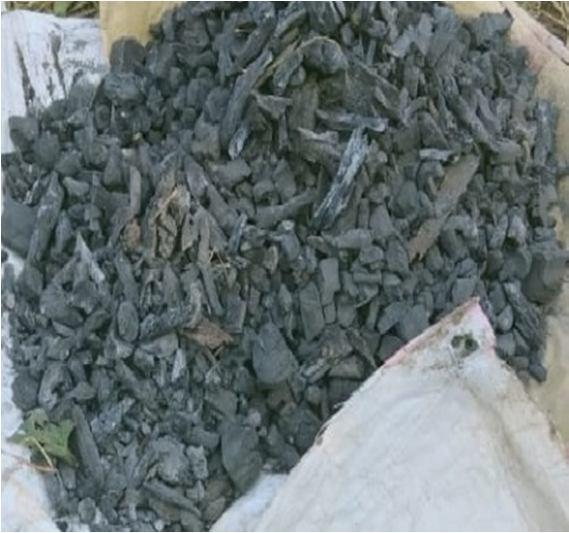

1) Experimental Setup: Pilot scale vertical subsurface flow constructed wetland with and without macrophytes were studied. The experimental setup was assembled using required size pit where an outlet was placed at the other place, from the bottom using a PVC pipe. The surface of the wetland media was an area of one square meter (1.2*0.9 m2). Macrophyte growing media was prepared in multi layers consist of gravel, sand and garden soil from the bottom respectively, each placed for 10 to 30 cm height. The size of the gravel and sand were nearly in the range of 20 40 mm, 10 20 mm, 4.5mm 10 mm, 1mm 4.5mm and 0.1 1 mm respectively. This media was thoroughly washed with deionized water to remove contaminants prior to its usage in the wetland system. Then, the aquatic macrophyte Colocasiaesculenta was planted in the growing media with the plant. A tank provided at bottom of outlet was assembled with floating macrophyte. The said macrophyte was acclimatized with the feed water for 4 weeks for its better survival in the new environment. The experiments were conducted under controlled conditions in natural environment exposed to sunlight. Once the macrophyte was acclimatized with the feed water, it was fed with wastewater from the top of the media with the hydraulic retention time (HRT) of 24 hour and in floating macrophytes tank 48 hour. This experiment was conducted continuously.
2) Water Sampling and Analysis: A grab sampling technique was used to collect wastewater sample from wastewater storage tanks where they store the wastewater prior to final discharge. Before sampling, wastewater was thoroughly mixed with spade to make sure a homogenous mixture. Samples were collected and analyzed for various physico chemical parameters such as pH (IS 3025, Part 11), Electric conductivity(EC),Total solid sand Total suspended solids (IS 3025, Part 17), Total dissolved solids (IS 3025, Part 16), Biological oxygen demand (BOD) (IS 3025 (Part 44)), Chemical oxygen demand (IS 3025 (Part 58)), nitrate (IS 3025 (Part 34)) and phosphate (IS 3025, Part 31). The TS, TSS and TDS were measured by gravimetric method; BOD by Winkler’s method of titration; COD was determined by oxidation (K2CrO4) and titrimetric method. Phosphate, Nitrate and Sulphate were measured by colorimetric method at spectrophotometer wavelength 840 nm, 420 nm, and 420 nm respectively. The standard analytical methods recommended by APHA (1989) were adapted.


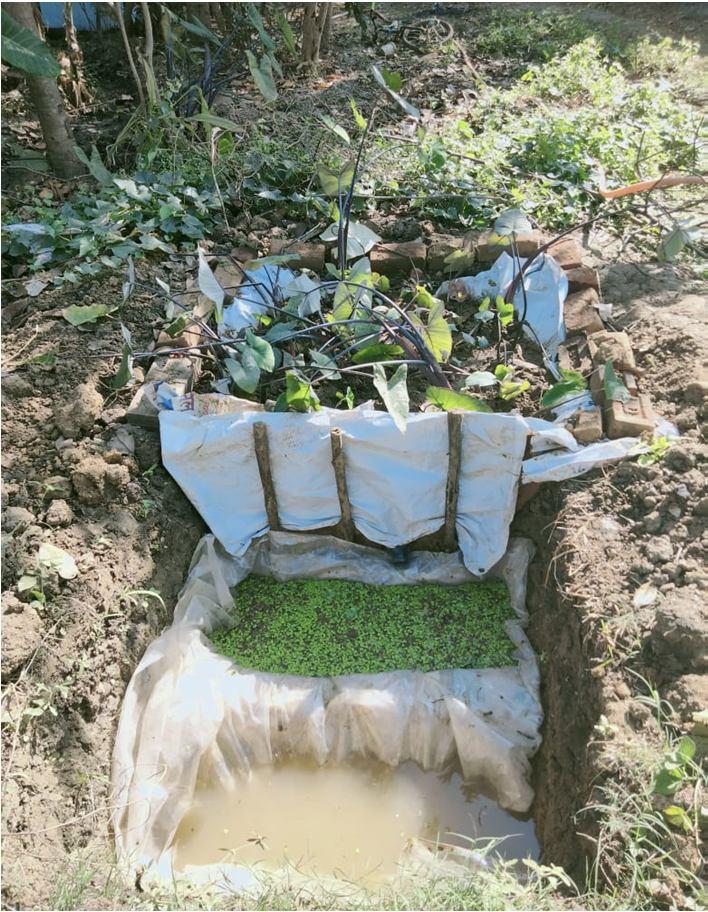
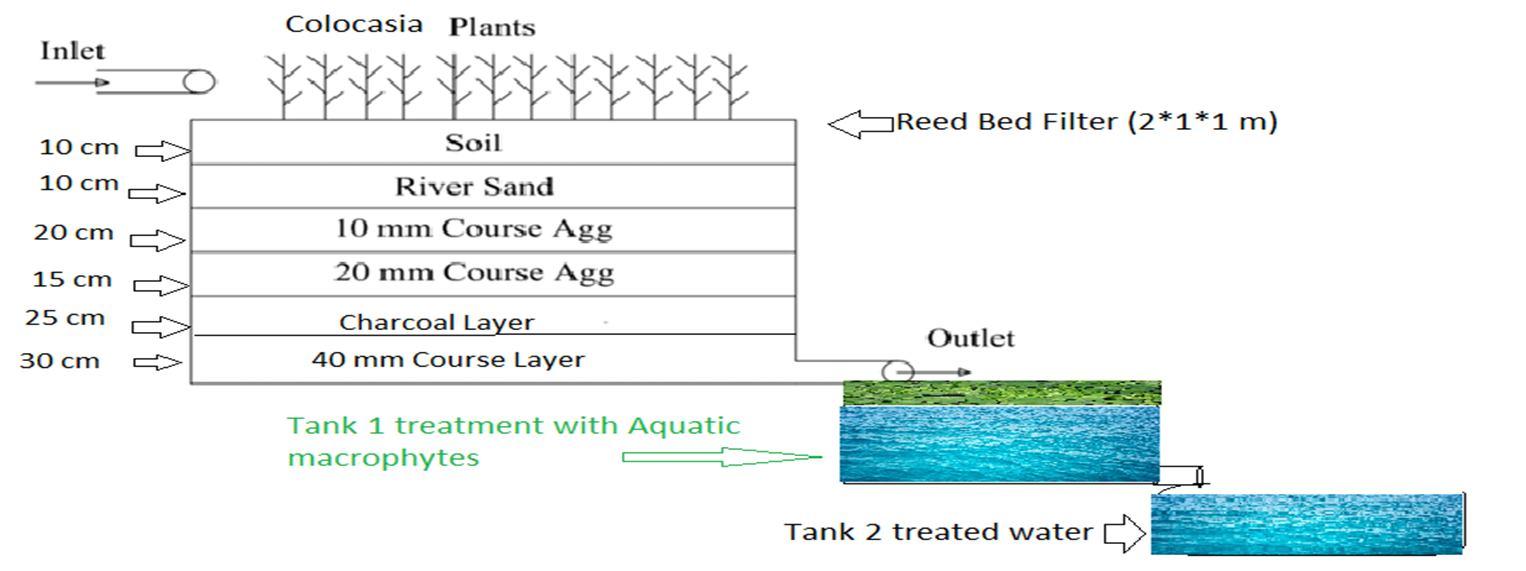
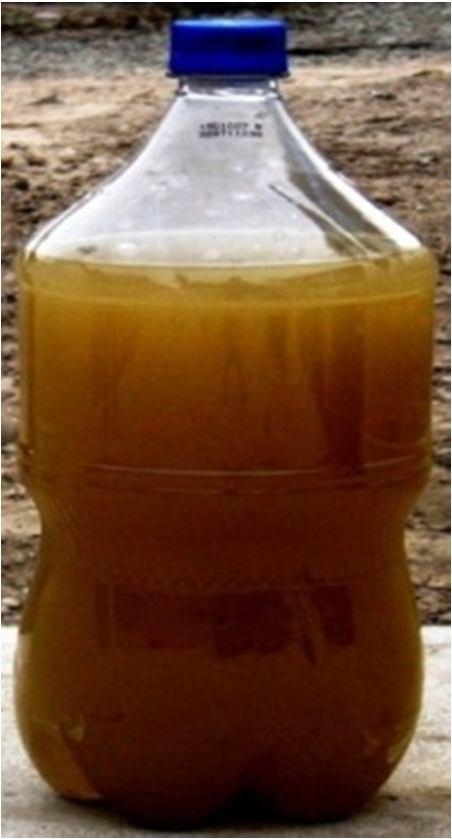

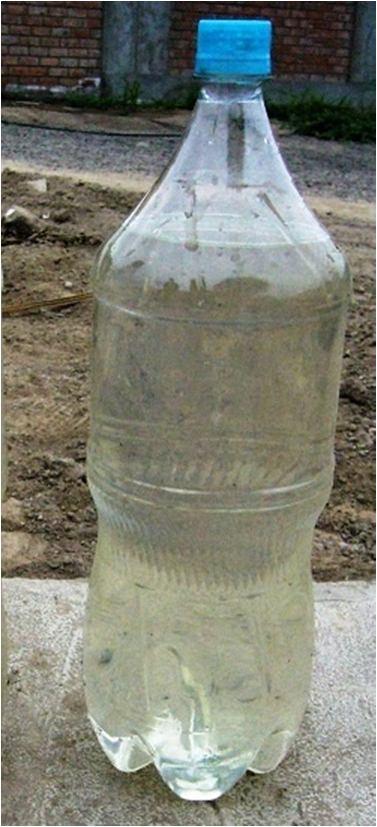
ISSN: 2321 9653; IC Value: 45.98; SJ Impact Factor: 7.538 Volume 10 Issue XI Nov 2022 Available at www.ijraset.com

This section deals with the results and discussion showing promising results of treatment of wastewater by reed bed technology using aquatic and floating macrophytes and a control reed bed.
Table 2: Parameters of wastewater before and after treatment
Parameters
Wastewater Sample Before Treatment (Sample 1)
After Treatment Sample from first chamber (Sample 2) Sample from second chamber (Sample 3)
Colour (Hazen Unit) 60.0 35.0 5.0 Odour Smell Few Smell No Smell pH at 250 C 6.73 6.78 7.1
BOD (mg/Lit) 3 Days at 270 C 376 182 97.2 COD (mg/Lit) 476 204 128 TDS (mg/Lit) 824 576 443
TSS (mg/Lit) 203 129 92.3
Nitrogen (mg/Lit) 53.4 28.9 18.4 Phosphate (mg/Lit) 32.7 24.7 11.8
Fig. 12: pH of wastewater before and after treatment
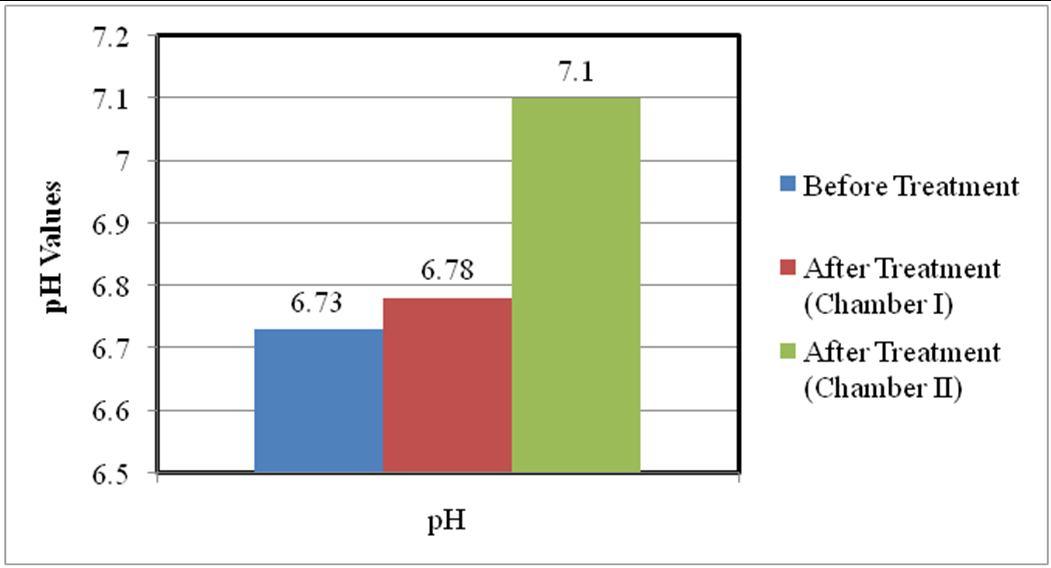

Fig. 13: BOD of wastewater before and after treatment
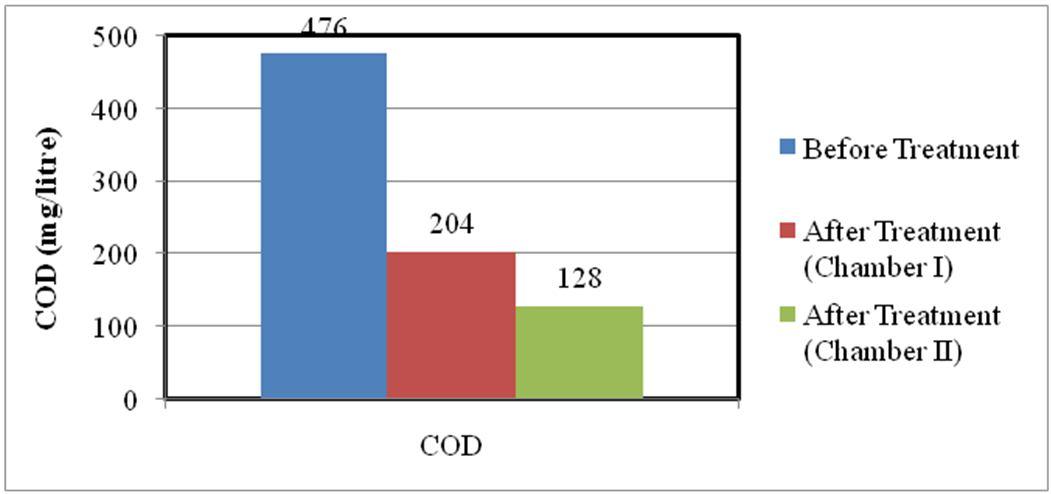
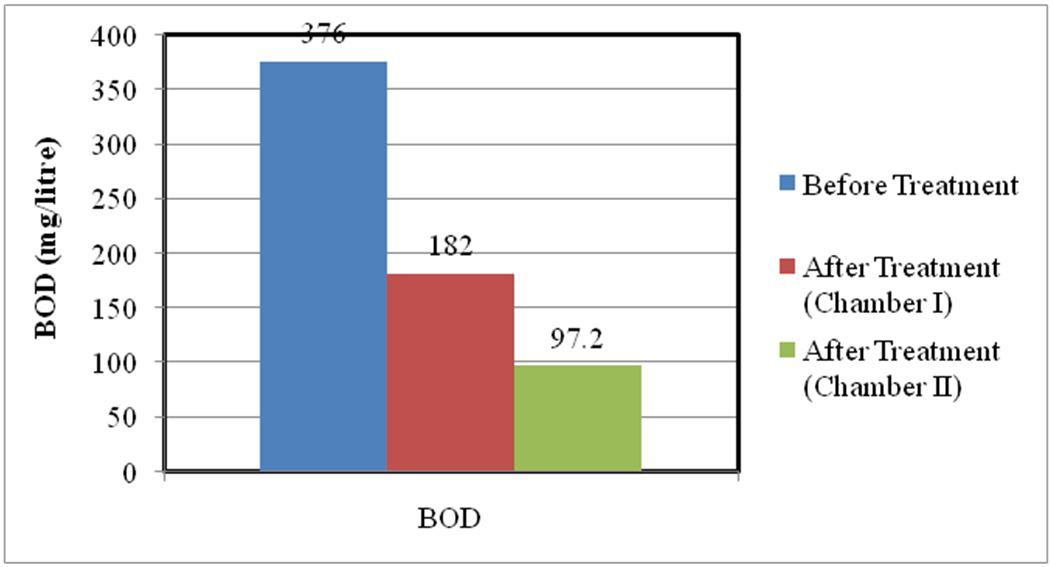
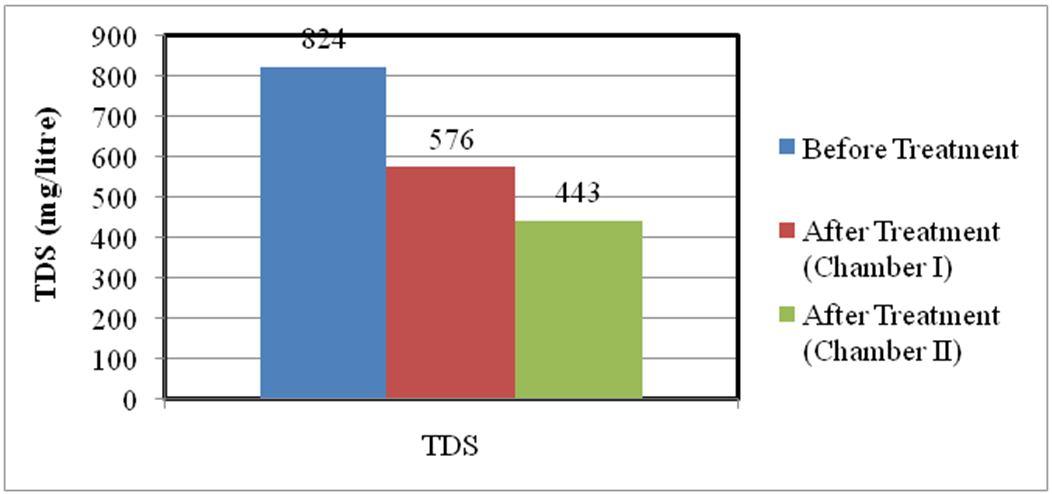
Fig. 14: COD of wastewater before and after treatment
Fig. 15: TDS of wastewater before and after treatment
ISSN: 2321 9653; IC Value: 45.98; SJ Impact Factor: 7.538 Volume 10 Issue XI Nov 2022 Available at www.ijraset.com

Waste water discharged was analyzed to determine its characteristics. Unlike in a rural area the waste water shows variation in concentration according to strength. TSS, BOD, COD, Nitrogen, TDS, Phosphate, pH, Colour particularly show large variations. Domestic Wastewater Treatment by Combination of Root Zone Technology and macrophytes (aquatic and floating) was employed on single house scale to treat the waste water. Based on the experimental results, the following conclusions are made.
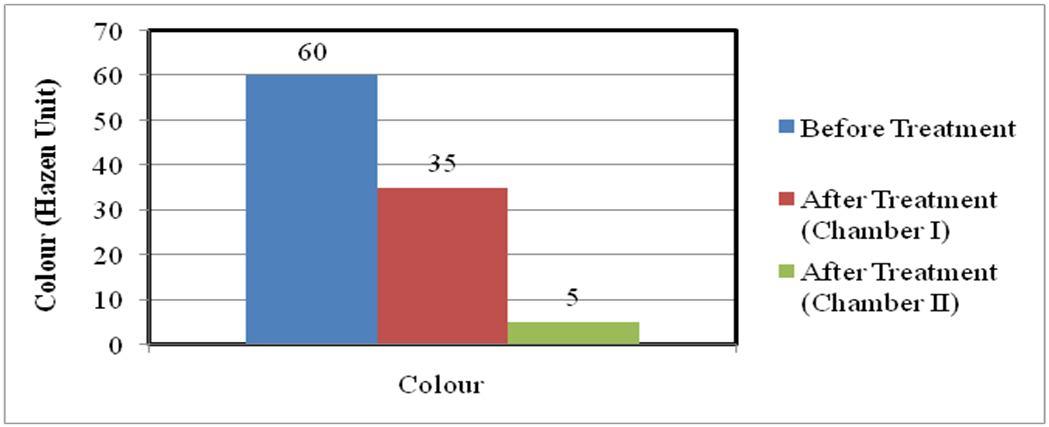
1) This study demonstrated that the designed sub surface Vertical flow constructed wetland system could be effectively used for treatment of the domestic waste water.
2) Regarding the performance achieved, the sub surface Vertical flow constructedwetland was able to reduce further the level of the main physicochemical pollution parameters. The plants do play an important role in the treatment.
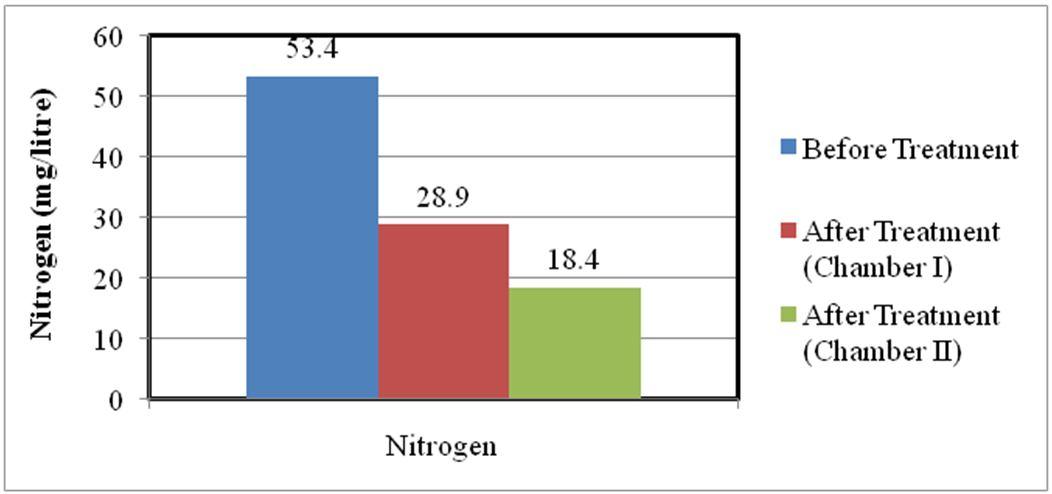
3) Thus the root zone treatment can be utilized independently or as an addition to macrophytes treatment for complete treatment of waste water.
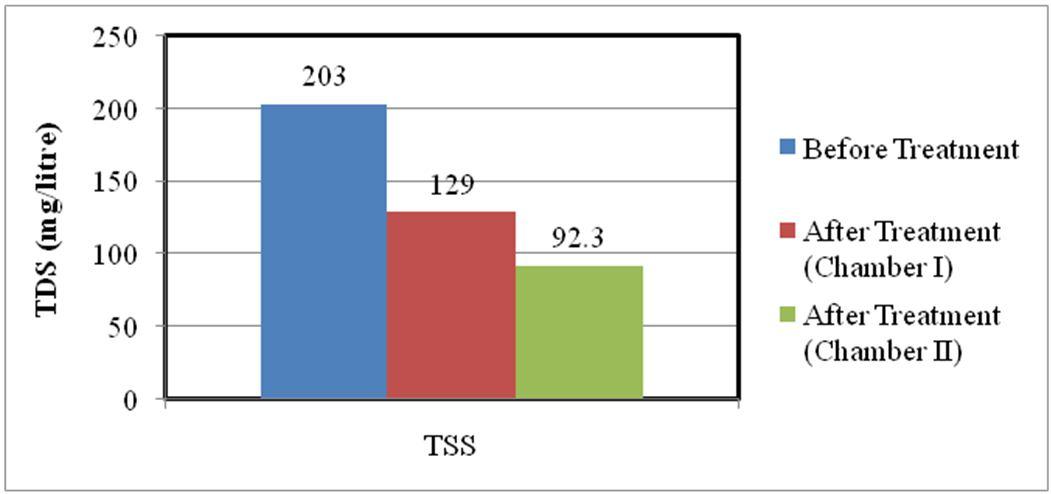
4) In constructing and operation of Root Zone Treatment system, there is no emission of gases which are not imparting negative impact on environment
5) Reed bed technology is very efficient method for treating decentralized waste water treatment for domestic waste water. It has been observed that In India BOD removal efficiency in Vertical flow varies from 70 80 %,TSS removals are 50 80 % in most cases, In Pathogen and coliform almost 100% removal can be expected. In Reed bed system water is treated in natural manner and not requires much money, not requirement of much energy, not requirement of complicated set up.

[1] Abou Elela, S., & Hellal, M. (2012). Municipal wastewater treatment using vertical flow constructed wetlands planted with Canna, Phragmites and Cyprus. Ecological Engineering, 47, 209 213.
[2] Abou Elela, S., Golinelli, G., Saad El Tabl, A., & Hellal, M. (2013). Treatment of municipal wastewater using horizontal flow constructed wetlands in Egypt. Water Science and Technology, 69(1), 38 47.
[3] Agrawal, V., & Jadhav, S. (2020). Alternative Method for Treatment of Wastewater in Textile industry: Review. International Journal of Scientific Research in Science And Technology, 385 390.
[4] Antoniadis, A., Takavakoglou, V., Zalidis, G., & Poulios, I. (2007). Development and evaluation of an alternative method for municipal wastewater treatment using homogeneous photocatalysis and constructed wetlands. Catalysis Today, 124(3 4), 260 265.
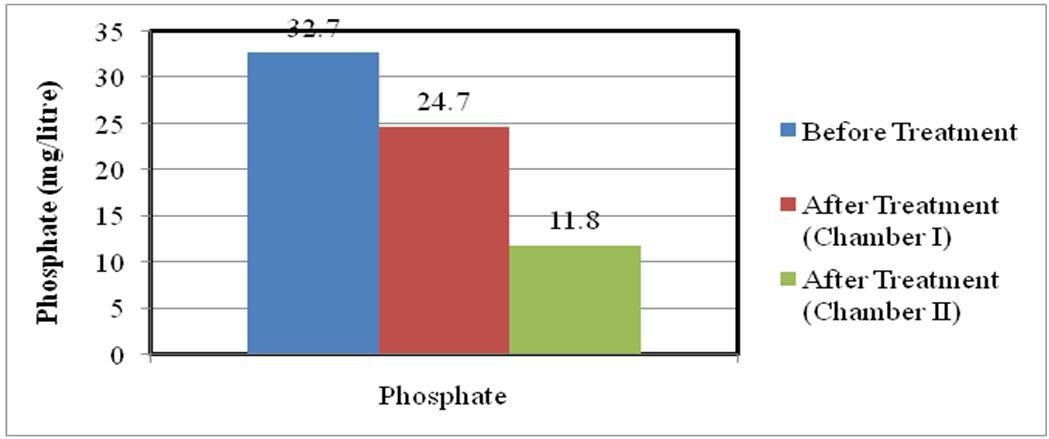
[5] Antoniadis, A., Takavakoglou, V., Zalidis, G., Darakas, E., & Poulios, I. (2010). Municipal wastewater treatment by sequential combination of photocatalytic oxidation with constructed wetlands. Catalysis Today, 151(1 2), 114 118.
[6] Arias, M., & Brown, M. (2009). Feasibility of using constructed treatment wetlands for municipal wastewater treatment in the Bogotá Savannah, Colombia. Ecological Engineering, 35(7), 1070 1078.
ISSN: 2321 9653; IC Value: 45.98; SJ Impact Factor: 7.538 Volume 10 Issue XI Nov 2022 Available at www.ijraset.com

[7] Behrends, L., Bailey, E., Jansen, P., Houke, L., & Smith, S. (2007). Integrated constructed wetland systems: design, operation, and performance of low cost decentralized wastewater treatment systems. Water Science and Technology, 55(7), 155 161.
[8] Bhat, V. (2020). Wastewater Treatment Option: Vertical Flow Constructed Wetland. International Journal for Research in Applied Science and Engineering Technology, 8(1), 298 300.
[9] Bhatia, M., & Goyal, D. (2013). Analyzing remediation potential of wastewater through wetland plants: A review. Environmental Progress & Sustainable Energy, 33(1), 9 27.
[10] Brix, H. (1987). The Applicability of the Wastewater Treatment Plant in Othfresen as Scientific Documentation of the Root Zone Method. Water Science and Technology, 19(10), 19 24.
[11] Brix, H. (1987). Treatment of Wastewater in the Rhizosphere of Wetland Plants The Root Zone Method. Water Science and Technology, 19(1 2), 107 118.
[12] Calheiros, C., Rangel, A., & Castro, P. (2007). Constructed wetland systems vegetated with different plants applied to the treatment of tannery wastewater. Water Research, 41(8), 1790 1798.
[13] Chalk, E., & Wheale, G. (1989). The Root Zone Process at Holtby Sewage Treatment Works. Water and Environment Journal, 3(2), 201 211.
[14] Climate Change 2007 report, The Physical Science Basis Contribution of Working Group I to the Fourth Assessment Report of the IPCC.
[15] Dogdu, G., & Yalcuk, A. (2015). Indigo dyeing wastewater treatment by eco friendly constructed wetlands using different bedding media. Desalination and Water Treatment, 57(32), 15007 15019.
[16] Dong, C., Huang, Y., Wang, S., Huang, Y., Tao, L., & Xu, Y. (2014). Plants of Constructed Wetland Wastewater Treatment Systems: A Comparison of the Oxygen Release from Roots of Typha and Phragmite. Applied Mechanics and Materials, 641 642, 371 375.
[17] Gopal, B. (1999). Natural and Constructed Wetlands for Wastewater Treatment: Potentials and Problems. Water Science and Technology, 40(3), 27 35.
[18] Green, M., Martin, J., & Griffin, P. (1999). Treatment of Combined Sewer Overflows at Small Wastewater Treatment Works by Constructed Reed Beds. Water Science and Technology, 40(3), 357 364.

[19] Gumbricht, T. (1992). Tertiary wastewater treatment using the root zone method in temperate climates. Ecological Engineering, 1(3), 199 212.
[20] Haydar, S., Anis, M., & Afaq, M. (2020). Performance evaluation of hybrid constructed wetlands for the treatment of municipal wastewater in developing countries. Chinese Journal of Chemical Engineering, 28(6), 1717 1724.
[21] Henze, M., & Ledin, A. (2001). Types, characteristics and quantities of classic, combined domestic wastewaters. Vol. Chapter 4, pp. 59 72).
[22] Kamble, P., & Dalvi, T. (2017). Wastewater Treatment using Horizontal Subsurface Flow Constructed Wetland. International Journal of Trend in Scientific Research and Development, Volume 2(Issue 1), 480 482.
[23] Kern, J., & Idler, C. (1999). Treatment of domestic and agricultural wastewater by reed bed systems. Ecological Engineering, 12(1 2), 13 25.
[24] Kumar, M., & Singh, R. (2017). Performance evaluation of semi continuous vertical flow constructed wetlands (SC VF CWs) for municipal wastewater treatment. Bioresource Technology, 232, 321 330.
[25] Mander, Ü, & Mauring, T. (1997). Constructed wetlands for wastewater treatment in Estonia. Water Science and Technology, 35(5), 323 330.
[26] Mbuligwe, S. (2005). Comparative treatment of dye rich wastewater in engineered wetland systems (EWSs) vegetated with different plants. Water Research, 39(2 3), 271 280.
[27] Morari, F., & Giardini, L. (2009). Municipal wastewater treatment with vertical flow constructed wetlands for irrigation reuse. Ecological Engineering, 35(5), 643 653.
[28] Ms. J. Kalaiselvy, Dr. S. Sundararaman, & Mr. K. Jaiganesan. (2016). Treatment of Dairy Wastewater by Root Zone Technique using Phragmitis Australis. International Journal of Engineering Research and, V5 (01).
[29] Mthembu, M., Odinga, C., Swalaha, F., & Bux, F. (2013). Constructed wetlands: A future alternative wastewater treatment technology. African Journal of Biotechnology, 12(29), 4542 4553.
[30] Mulidzi, A. (2007). Winery wastewater treatment by constructed wetlands and the use of treated wastewater for cash crop production. Water Science and Technology, 56(2), 103 109.
[31] Paing, J., & Voisin, J. (2005). Vertical flow constructed wetlands for municipal wastewater and septage treatment in French rural area. Water Science and Technology, 51(9), 145 155.
[32] Philippi, L., da Costa, R., & Sezerino, P. (1999). Domestic Effluent Treatment through Integrated System of Septic Tank and Root Zone. Water Science and Technology, 40(3), 125 131.
[33] Pipatpong. (2009). Wastewater Treatment Using Horizontal Subsurface Flow Constructed Wetland. American Journal of Environmental Sciences, 5(1), 99 105.
[34] Randall, C. (2004). Changing needs for appropriate excreta disposal and small wastewater treatment methodologies or the future technology of small wastewater treatment systems. Water Science and Technology, 48(11 12), 1 6.
[35] Rivera, F., Warren, A., Curds, C., Robles, E., Gutierrez, A., Gallegos, E., & Calderón, A. (1997). The application of the root zone method for the treatment and reuse of high strength abattoir waste in Mexico. Water Science and Technology, 35(5), 271 278.
[36] Saeed, T., Afrin, R., Muyeed, A., & Sun, G. (2012). Treatment of tannery wastewater in a pilot scale hybrid constructed wetland system in Bangladesh. Chemosphere, 88(9), 1065 1073.
[37] Samuel (2005). Drinking Water Source Protection Practices in Kerala with special emphasis to Rain Water Harvesting Initiatives.
[38] Sandoval, L., Zamora Castro, S., Vidal Álvarez, M., & Marín Muñiz, J. (2019). Role of Wetland Plants and Use of Ornamental Flowering Plants in Constructed Wetlands for Wastewater Treatment: A Review. Applied Sciences, 9(4), 685.
[39] Santosh Kumar Garg, Environmental Engineering Sewage Waste Disposal and Air Pollution Engineering. Vol.2.
[40] Sudarsan, J., Roy, R., Baskar, G., Deeptha, V., & Nithiyanantham, S. (2015). Domestic wastewater treatment performance using constructed wetland. Sustainable Water Resources Management, 1(2), 89 96.
[41] Thorat, P., Saniya, S., Shaikh, S., Shaikh, R., & Sonawane, A. (2019). Domestic Wastewater Treatment by Root Zone Technology Option: Colacassia Plant. International Journal of Engineering and Management Research, 9(2), 55 60.
[42] Vymazal, J. (2005). Constructed wetlands for wastewater treatment. Ecological Engineering, 25(5), 475 477.
[43] Williams, J., Zambrano, D., Ford, M., May, E., & Butler, J. (1999). Constructed Wetlands for Wastewater Treatment in Colombia. Water Science and Technology, 40(3), 217 223.
